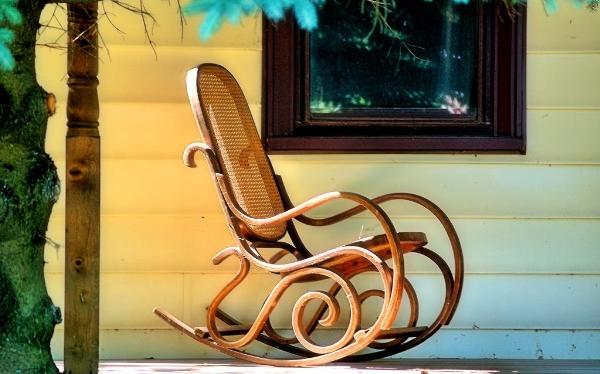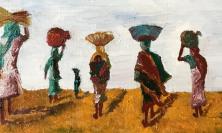The month of August traditionally marks the heart of British summertime and brings with it not only a change in the weather, but also a change in the way we experience the world around us. The summer season gives us opportunities to discover the body of Christ in new and revitalizing ways, writes Gemma Simmonds CJ.
Does it make sense to write about a spirituality of summer? At one level, not at all, if it is to suggest that the spiritual life is subject to seasonal fluctuations, or that there is something about the summer that is more or less spiritual or spiritually significant than any other time of the year. But the liturgical life of the church has always been firmly governed by a sense of times and seasons. One of the most disconcerting things about modern travel is the way that it can transport us from one season and climate to another within so short a space of time that our own bodies and inner sense of rhythm become completely disorientated. One day I am in a British midsummer, the next I am in an Australian midwinter. The liturgy tells us that times and seasons do matter. Our bodies are attuned to the onset and passing of seasons of the year, our whole cycle of life as Catholic Christians is dominated by liturgy and sacrament – the embodied signs of what it means to be worshippers of the incarnate God. So, in that sense, we can talk about a spirituality of summer and be making sense as we talk.
Liturgically, then, summer is ordinary time, when we let go of the drama of Lent and Passiontide and Easter and can begin to wallow in some of the big, extravagant feasts: Ascension, Pentecost, the Sacred Heart, Corpus Christi. All of these are, in some measure, feasts of the body, where we begin to come to terms with the absence of the earthly body of Christ and begin to get the measure of what ‘This is my body’ means in day to day terms. The body of Christ is discovered in the body of believers, in the other who believes and lives out a similar faith in Christ – or indeed whose articulation and mode of living is challengingly different from mine. The body of Christ is revealed and savoured in the human, loving, passionate heart of Jesus and in my own capacity to love and be loved in and through the Eucharist.
This is where we let go, spiritually speaking, of the safety rail, and swim out into the deep. The scripture readings and the structure of the liturgy are less directive and leave us to make what we can of the mysteries of faith embodied in the incarnate and glorified Jesus. This is the time of the flowering of faith, when we set about making sense of the earlier seasons of catechesis in the mysteries of the incarnation. Now we walk by faith and not by sight, growing into a deeper awareness of how the everyday is redolent of the presence of God. Perhaps this goes as well with the sense that summer is a time when our own bodies are more apparent. One of the delights of an English summer lies in being able to shed layers and carry round fewer protective barriers between our bodies and the cold and damp of the external world. Behaviour becomes less guarded: people sit in parks picnicking over lunch breaks, take coffee outside, sit at pavement cafes instead of huddling indoors. Summer becomes a time for reconnecting with the natural light, the greater opportunities for communal living afforded by being able to sit out of doors for longer, watching children playing and people talking outside instead of sitting enclosed. There is a sense of a general relaxing into the present, a willingness to linger over meals or encounters, savouring the moment, allowing the time to flow by. Summer takes us into holiday time, when in families the rhythms of work change, children and adults may spend more time together, positively or negatively as such an experience may be. Holidays can take us into different environments, give opportunities for exploration and expansion of horizons. ‘This is my body’ becomes an invitation to contemplate the risen Jesus in the other, to experience the presence of God in human encounters.
In the Ignatian tradition, the application of the senses is a way of praying over material for prayer that allows what has surfaced to be savoured and tested through the medium of the senses. It is a more contemplative type of prayer and one that allows the body to verify what the mind and heart have groped towards during the day. The warmth and light of summer bring so much enrichment in sight and scent and touch and taste. Perhaps part of the spirituality of summer is an invitation to a more contemplative approach to ordinary things: the feel and scent and taste of food, of flowers and plants, sea air, sunlight and warmth, fresh wind and the sound of cities, streets and gardens unusually alive.
But if bodies come alive in summer they can also become problematic. One of the recurrent themes in women’s magazines, as soon as Easter is over, is the offer of radical diets to enable us to look good in swimming costumes and more revealing clothing. If summer signals the liberation from woollies, it also signals the threat of being seen with the bulk of winter still upon us. Every aspect of the female body becomes a potential fashion threat. Hair: the wrong colour, wrecked by the sun, in the wrong places. Skin: too white, too dark, too dry, at risk of cancer. Curves: too much, too little, in the wrong place, in fashion, out of fashion. What does it mean to have a spiritual approach to summer that copes with and challenges the tyranny of the fashion and diet industries, laden as they are with the doom-filled message that women’s bodies are only acceptable if they conform to a standard of beauty achieved by few? ‘This is my body’ becomes an invitation to accept and honour own own embodiedness and to live more at ease within our enfleshed selves. A positive embrace of the bodily, the incarnate, frees us from negative judgment of the flesh, born of fear and self-hatred. We learn to thank God for what is, here and now, for the flowering and fruition of our own bodies and lives, whatever their stage and shape.
Whether in the country or just passing neighbours’ gardens or public parks, summer reminds us of the insane generosity of God. Trees and plants flower and fruit in a way that can seem almost criminally wasteful. Bumble bees amble past, drunk on nectar. Neither animals nor humans can eat and use all the fruit that emerges from the trees and bushes. If a spirituality of summer tells us anything, it is that the fruition of the earth, the fruit of time spent contemplatively going about our daily tasks, is always going to be more than we can calculate and make use of in obvious ways. A sense of the sacrament of the present moment can liberate us from the tyranny of time, dominated by market forces and the idolization of work, of cost effectiveness, of productiveness as value. Wasting time with the God whose times and seasons are full of generous wastefulness can remind us of what truly matters. The God who is with us always to the end of time is not limited to any season. God is both within and beyond times and seasons, but invites us in the summer, perhaps more vividly than at other times, to hear ‘this is my body’ as an invitation to savour the beauties of creation. This includes ourselves, the other, whether family, friend or stranger and the earth in full flower and fruit as the power of the risen Christ liberates all creation from bondage.
Dr Gemma Simmonds CJ teaches theology at Heythrop College, University of London.






